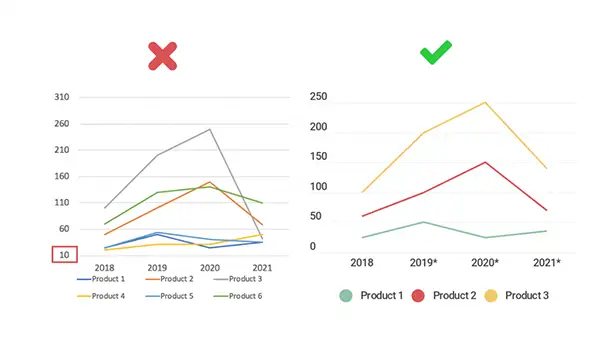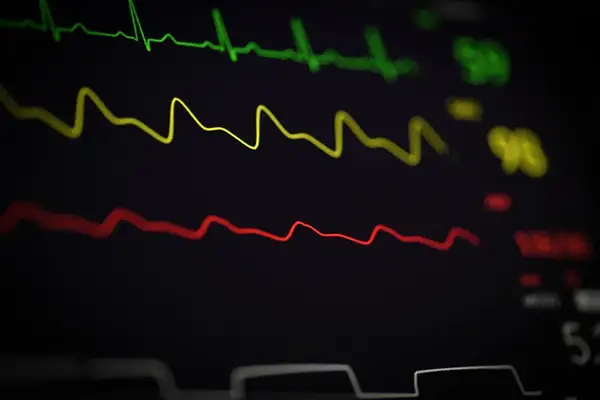
As a necessary tool in visualizing data trends, a line graph can be an incredibly efficient way to tell a clear and effective story with your data.
However, to fully harness their potential, understanding the basics of line graph creation and the factors that elevate their presentation is key.
Below, we delve into the decisive aspects of creating line charts.
Understanding Line Charts Fundamentals for Effective Creation
A line chart, at its core, illustrates changes in data over a period. Typically, time is represented on the x-axis, while the variable you are measuring lies on the y-axis. Understanding this fundamental structure is the first step in creating them.
Equally imperative is choosing the right type. Basic, stacked, or 100% stacked ones are the three primary types, each useful in different scenarios. For instance, a basic one is suitable for representing changes over time for one or more groups.
A key aspect to consider while designing a line graph is ensuring the collection is accurately represented. The scale used can dramatically alter its final look, and hence the data interpretation. A misrepresentation can lead to skewed conclusions.
Data Selection Process In Creating Line Charts
The effectiveness of it heavily relies on the collection it represents. Hence, the selection process is paramount. It begins with identifying the correct variables that represent the trend or pattern you intend to visualize.
Further, consider the size of the set you want to represent. It can quickly become cluttered and challenging to interpret with an excessive number of variables.
Fascinating Fact:
Line charts are made by plotting a series of various points and linking them with a straight line
Next, consider the period this collection covers. Time is a vital aspect of them as it heavily influences the trend represented by the graph. Longer time periods can provide more comprehensive views, but can also distort more transient trends.
Aesthetic Aspects To Keep in Mind When Designing Line Charts

While representing data accurately is the primary purpose of it, aesthetics also play an influential role in comprehension and engagement. Firstly, consider your color choices. A line chart should not only be engaging but color combinations should help differentiate between sets.
Line thickness is another element. Too thin lines can make data interpretation challenging, while too thick can overshadow primary aspects like gridlines and labels.
Understanding your audience can also guide your aesthetic choices. Gauge the familiarity of your audience with them and adjust the complexity of your design accordingly.
Lastly, try to declutter your graph as much as possible. Unnecessary details can divert attention from captious data. Simplicity can often lead to more effective communication.
Utilizing Technology for Efficient Line Chart Creation
Today, technology significantly simplifies the process of chart creation. Several software solutions offer intuitive platforms for designing, customizing, and sharing them.
These tools also eliminate the possibility of human error in data plotting by automating the process. They also provide options for implementing design aspects like color and line thickness adjustments easily.
Most importantly, they provide the capacity to manage substantial information sets. This allows seamless incorporation of more detailed trends and insights into your line graphs.
Whichever tool you decide to use, ensure it aligns with your specific needs and skill sets. Not all tools may offer the same features and ease of use, hence choose wisely. With technology making the creation process much more accessible and efficient, visualizing your data in the form of a line chart should now be a breeze.